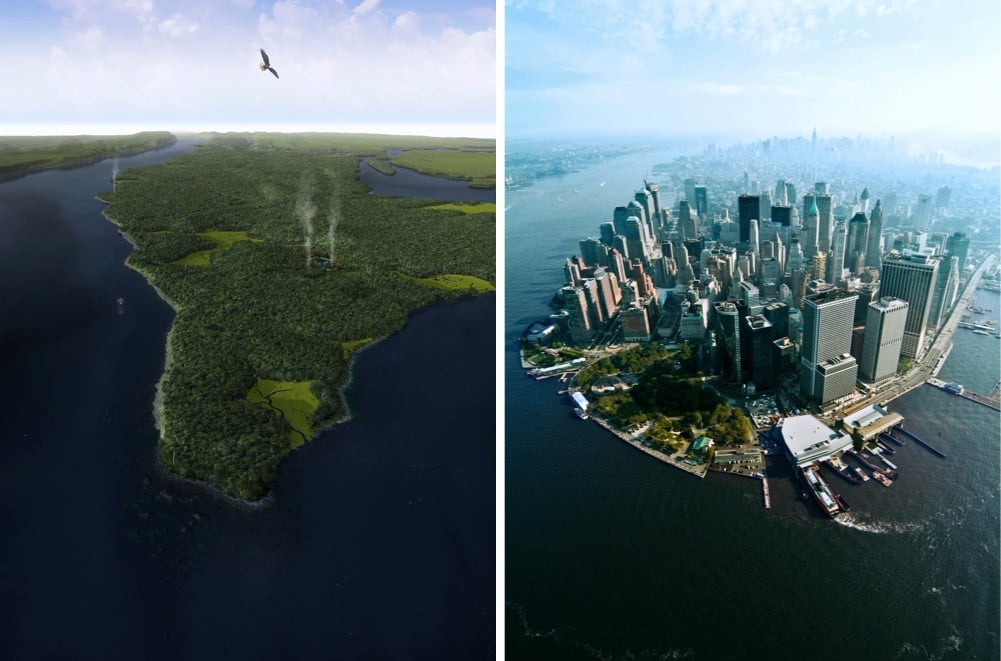A Virtual Stroll Through Manhattan, Circa 1609

The NY Times’ Michael Kimmelman has been taking a series of virtual walks around NYC, exploring different aspects of the city. His latest walk is with Eric Sanderson, conservation ecologist and author of Mannahatta: A Natural History of New York City. The pair of them start at the southern tip of Manhattan over 400 years ago, with Sanderson explaining how the island would have appeared when Henry Hudson arrived in 1609.
Michael Kimmelman: Aside from Hudson’s ship, what do we see?
Eric W. Sanderson: Whales and porpoises. One of the earliest sketches we have of Manhattan shows a whale in the Hudson River. The charter of Trinity Church includes a provision specifically saying dead whales found on beaches in the province of New York are property of the church, which could use them to make oil and whale bone. So whales were clearly a meaningful part of the local economy and ecosystem.
Kimmelman: What was the ecosystem?
Sanderson: Ecosystems, actually. Manhattan is something like one percent the size of Yellowstone. Yellowstone is 2.2 million acres and it has 66 ecosystems. Mannahatta had 55.
It’s an interesting thought exercise to imagine what might have happened had the United States been colonized from the West, instead of from the East. We might have decided to make Manhattan a national park. We would be coming to New York for an entirely different sort of wildlife.





Stay Connected